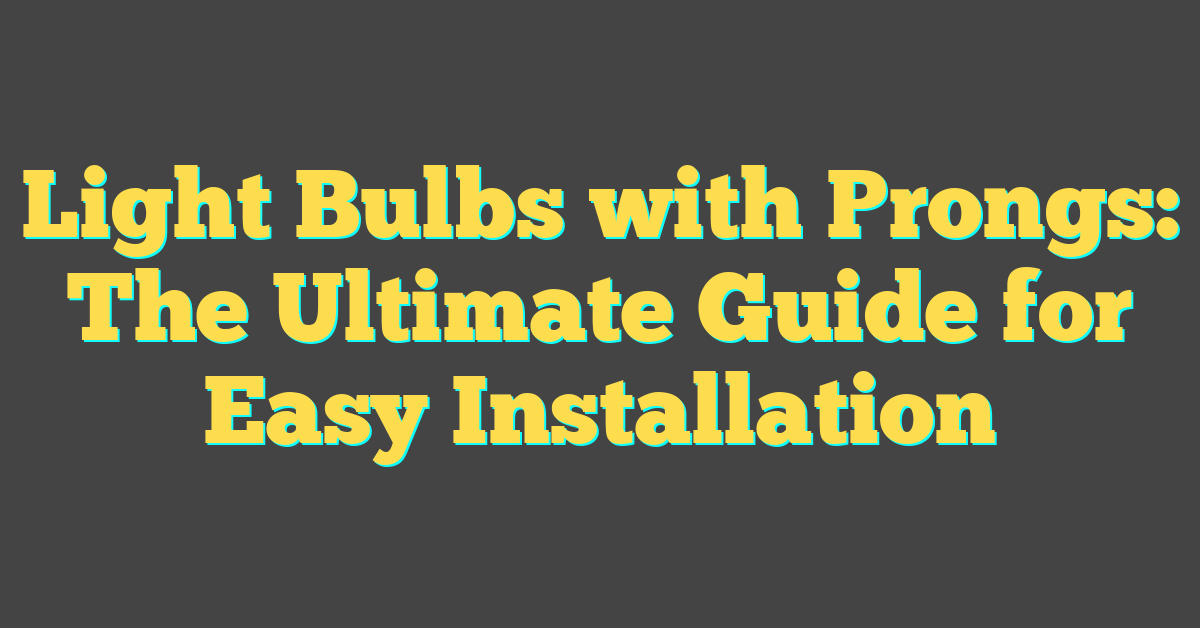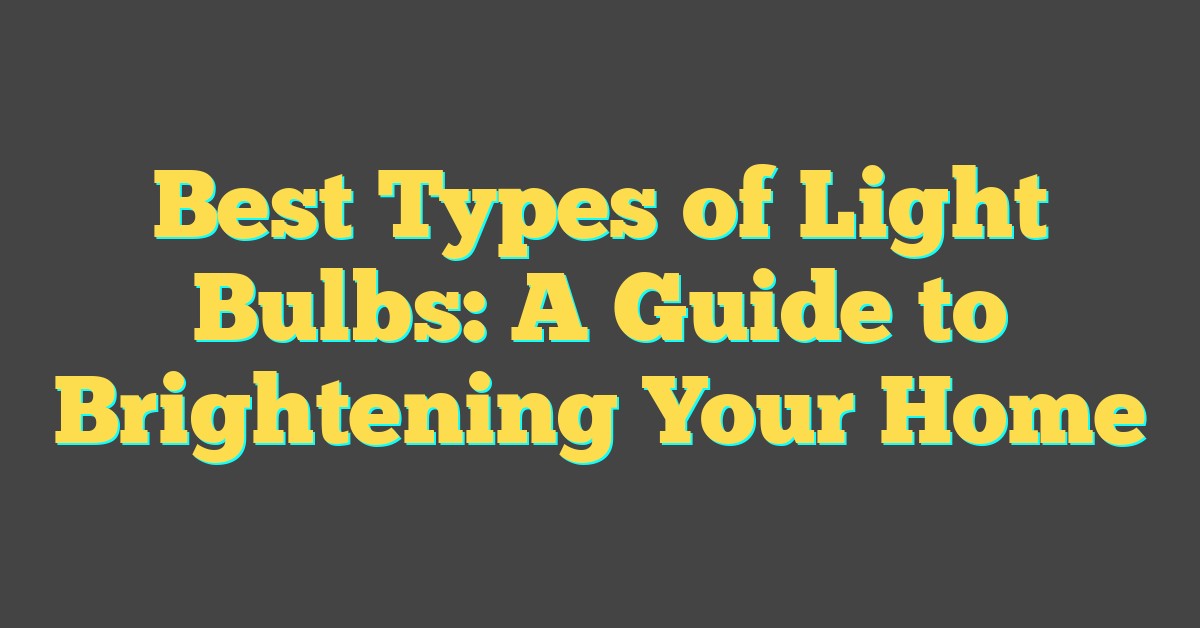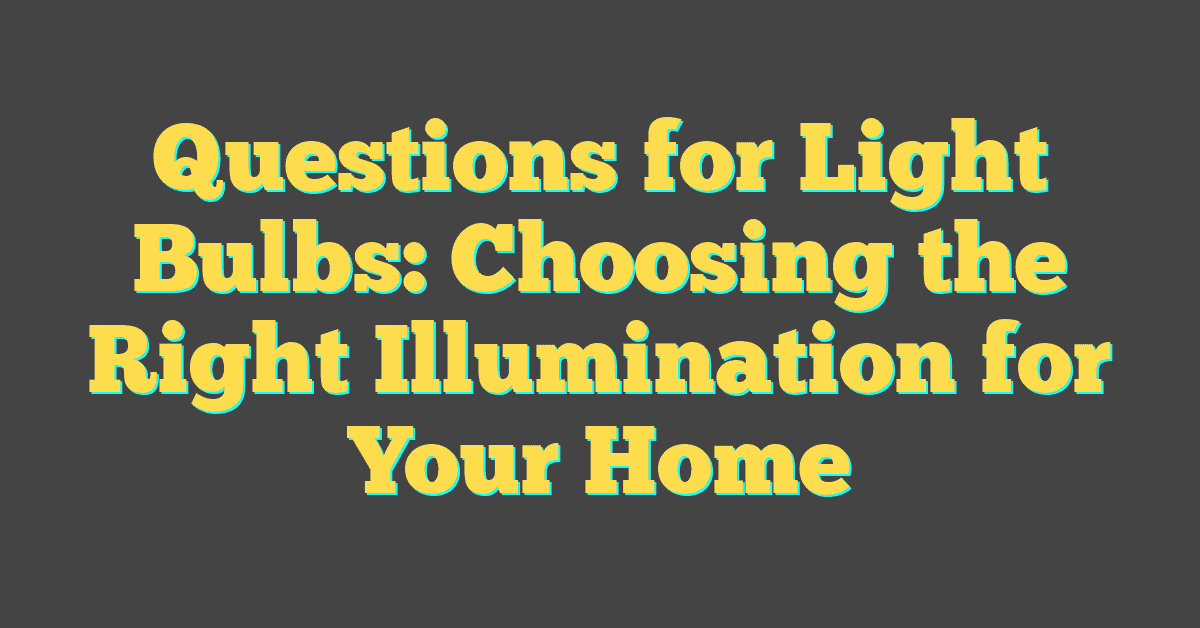When it comes to illuminating your space, light bulbs with prongs, also known as pin base bulbs, offer a secure way to brighten your environment. Unlike the screw-in bulbs that most people are familiar with, these bulbs feature two or more metal prongs at the base that insert and twist to lock into place. This type of connection is commonly found in certain desk lamps, recessed lighting fixtures, and some types of outdoor lighting.


LED light bulbs with prongs are increasingly becoming popular due to their energy efficiency and longer lifespan when compared to traditional halogen or compact fluorescent bulbs (CFLs). They come in a variety of shapes, brightness levels, and color temperatures, allowing you to customize the lighting in your home to suit your needs. Understanding how to choose, install, and replace these bulbs is key to maintaining continuous and reliable lighting in your space.
Key Takeaways
- Pin base bulbs are designed for secure installation in various lighting fixtures.
- LED prong bulbs are energy-efficient, with a variety of options available.
- Proper selection and maintenance of these bulbs ensure optimal lighting at home.
Types of Light Bulbs with Prongs
https://www.youtube.com/watch?v=BIiANEstIX4&embed=true
When you’re in the market for light bulbs with prongs, it’s crucial to know the specific types available. These unique bulbs offer different benefits and are designed to fit into specific fixtures with pin-type sockets.
GU24 Base Bulbs
GU24 base bulbs stand out as they use a two-prong twist-lock mounting mechanism. This design ensures a stable connection and is used mostly in compact fluorescent (CFL) and LED bulbs. Your choice of a GU24 base bulb revolves around the desire for energy efficiency and longer-lasting performance compared to traditional screw-in bulbs.
Two-Prong LED Light Bulbs
If you’re looking for durable and energy-saving lighting options, two-prong LED light bulbs are a great pick. These bulbs connect to your fixtures through two pins and are appreciated for their low energy consumption and long lifespan. They’re typically available as bi-pin or multi-pin configurations, providing you with versatile lighting solutions that can accommodate a variety of fixture designs.
Benefits of LED Light Bulbs
https://www.youtube.com/watch?v=9iUfCHzDUzY&embed=true
Switching to LED light bulbs offers you significant savings on your energy bills and provides a durable lighting option that stands the test of time.
Energy Efficiency
LED light bulbs are champions when it comes to saving energy. They use about 50% less electricity than traditional incandescent, fluorescent, and halogen options, resulting in substantial energy cost savings, especially over the bulb’s lifetime. Not only do they use less power, but LED bulbs also produce less heat which means less energy wasted on cooling.
Example:
- Traditional Incandescent Bulb: 60 watts
- Equivalent LED Bulb: ~10 watts
Longevity
When it comes to longevity, LEDs outshine their competitors with ease. The average LED light bulb can last up to 25,000 hours or more, which is 25 times longer than traditional light bulbs. This means that you will have to replace them much less frequently, reducing the overall cost and hassle associated with bulb maintenance.
Example:
- Traditional Bulb Lifespan: ~1,000 hours
- LED Bulb Lifespan: ~25,000 hours
Features of Prong Light Bulbs

When you’re looking to enhance the ambiance and functionality of your space, light bulbs with prongs offer several attractive features. These bulbs are recognizable by their two metal prongs, pins, or loops that extend from the base to make the electrical connection.
Dimmable Options
« Parts of Light Bulbs: Understanding What Shines Inside
Types of Light Bulb Fittings: A Guide to Choosing the Right One »
If you’re in need for controlling the intensity of light, various prong light bulbs come with dimmable capabilities. This allows you to adjust the brightness to suit your mood or the time of day, adding versatility to your lighting solutions. It’s important to ensure that your dimmer switch is compatible with your chosen bulb, as not all prong bulbs may support dimming.
Color Temperatures
The range of color temperatures available for prong light bulbs can affect the atmosphere of a room. Whether you’re looking for a warm, cozy glow or a cool, invigorating radiance, you can find bulbs labeled with measurements in Kelvins. Typically, color temperatures over 5000K are considered “cool”, while lower temperatures provide a “warm” light.
Daylight Bulbs
For a lighting experience that mimics natural sunlight, daylight bulbs with prong bases are an excellent choice. These bulbs generally have a color temperature of around 5000K to 6500K, offering bright and crisp lighting that can help in tasks requiring attention to detail and can also improve overall mood and productivity.
Choosing the Right Bulb for Your Home

When updating your home’s lighting, it’s essential to ensure that your new bulbs will fit your existing fixtures and provide the desired amount of light.
Compatibility
Before you buy new bulbs, you need to check the type of bulb base your fixture requires. Many modern homes use bulbs with pin bases, also known as prong bases, which include popular types such as GU10 or MR16. Pin base bulbs are designed to be pushed into place rather than screwed in. It is crucial to match the exact pin configuration with your light fixture to avoid the risk of damaging the fitting.
Brightness Levels
The brightness of a bulb is measured in lumens, which gives you an understanding of how much light a bulb will emit. Typically, the higher the number of lumens, the brighter the bulb. For instance, if you want to replace a standard 60W incandescent bulb, you should look for an LED bulb with about 800 lumens. To achieve various moods or functionalities in different rooms, choose bulbs with appropriate lumen levels — softer, dimmer lights for bedrooms and brighter ones for workspaces.
Installation and Replacement
https://www.youtube.com/watch?v=PAKpSFWuAEc&embed=true
When replacing or installing a light bulb with a prong base, you need to handle the bulb carefully to avoid damage, and ensure you’re fitting it correctly for your safety and the longevity of the bulb.
Safety Precautions
- Turn off the power: Always shut off the power at the circuit breaker or light switch to avoid electrical shock.
- Wait for cooling: If you’re replacing a burned-out bulb, allow it to cool first as halogen bulbs can get very hot.
Step-by-Step Guide
- Identify the bulb type: Check the old bulb for markings that indicate the prong type, such as G4 or G9, representing the distance between the prongs.
- Purchase the correct replacement: Match the wattage and prong type of your replacement bulb to the original.
- Remove the old bulb:
- Grasp the bulb gently but firmly.
- Pull straight out from the socket. Avoid twisting if it’s a plug-in type bulb.
- Install the new bulb:
- Hold the new bulb by its base (avoid touching the glass to prevent oils from your hand transferring).
- Align the prongs with the holes in the socket.
- Push straight in until it is firmly seated in the socket.
For a visual guide on these steps, watching a video on changing a 2 prong light bulb might be helpful.
Where to Buy

When you’re searching for light bulbs with prongs, you have several convenient purchasing options. Whether you prefer shopping from the comfort of your home or visiting a local store, you can easily find what you need.
Online Retailers
Shopping online is a hassle-free way to find a variety of light bulbs with prongs. Retailers like Amazon offer a wide selection, including GU24 LED bulbs that are energy-efficient and have a convenient twist-and-lock base. You can compare prices, read reviews, and check stock availability all in one place.
Local Store Prices
Local store prices may vary, but it’s worth checking out nearby lighting stores or home improvement outlets. Here, you can get a hands-on look at the light bulbs, and sometimes even negotiate the price or take advantage of in-store promotions.
Home Depot
The Home Depot is a reliable option where you can find a selection of twist-lock light bulbs. It’s a great place to get expert advice, see the bulbs first-hand, and pick up other home essentials in a single trip.
Understanding Stock and Availability

When you’re on the hunt for light bulbs with prongs, knowing how to check stock and understand product availability will save you time and hassle.
Checking Inventory Levels
To ensure you’re not met with disappointment, check the inventory levels of your desired light bulb with prongs before heading out or purchasing online. Retailers like Amazon often display the amount available directly on the product page, often labeled as “In Stock.” In physical stores, an associate can check inventory levels for you, or you may use in-store kiosks if available.
Product Availability
Product availability can fluctuate rapidly, especially with high-demand items such as energy-efficient LED bulbs with prong bases. Some bulbs, like the GU24 LED light bulb, might be available in bundles, which can affect inventory counts. Always look for mentions like “Limited Time Deal” or “x bought in past month” to gauge how quickly you need to act to secure your purchase.
Navigating Online Purchases

When you’re ready to buy light bulbs with prongs, the ease of your online shopping experience relies heavily on understanding how to use a website’s cart and the checkout process.
Using a Website Cart
Adding Items: Browse the selection of light bulbs with prongs and pick the ones that suit your needs. Once you’ve found the right bulbs, click Add to Cart to place them in your virtual shopping cart. This doesn’t commit you to buy, but it does save your choices in one convenient location.
Viewing Your Cart: To review your selections, navigate to your cart typically located at the top-right corner of the page. Here, you can see everything you’ve added, adjust quantities, or remove items if you change your mind.
Checkout Process
Initiating Checkout: With your cart filled with the desired LED prong bulbs, press the Checkout button to begin the purchase process.
Entering Details:
- Input your shipping information—where you’d like the items to be delivered.
- Choose a shipping method. Some options like faster shipping may cost more.
- Provide your payment information. Most websites are secure, but always check for https in the URL for peace of mind.
After reviewing your order, confirm your details are correct and finalize the purchase. Await a confirmation email summarizing your order—proof that your transaction was successful and your new bulbs are on their way!
Managing Online Account

When dealing with pronged light bulbs, especially those that can be controlled remotely like the Philips Hue, you’ll need to manage your online account effectively to ensure secure and convenient operations.
Creating an Account
To start using your smart light bulbs, you first need to create an account on the manufacturer’s website. This process usually involves:
- Navigating to the Sign Up page.
- Entering your personal details such as email and creating a password.
- Agreeing to the Terms of Use and Privacy Policy.
- Completing any verification steps, like confirming your email address.
Terms of Use
The Terms of Use for your smart light bulb account includes essential information you must understand:
- Usage Limitations: Your right to use the product and any software.
- Privacy: How your data is handled and the company’s commitment to protecting it.
- Updates: Conditions under which updates to software or terms occur.
Remember to review these terms carefully, as they outline your rights and responsibilities when using the website and associated products.
Communicating with Retailers

When reaching out to retailers about light bulbs with prongs, you’ll want to ensure that your communication methods are effective and that they address any technical issues, such as screen reader problems, you may encounter. Keep in mind carrier rates may apply when choosing your method of contact.
Contact Through Call or Text
You can quickly resolve queries or issues about prong light bulbs by contacting retailers directly through calls or text messages. Prior to calling, jot down any specific questions or concerns related to the product. This ensures that your conversation is to the point and productive. When sending a text, be clear and concise to avoid any miscommunication. Remember, carrier rates may apply depending on your mobile plan.
Reporting Screen Reader Problems
If you’re facing difficulties with a retailer’s website due to screen reader problems, report the issue to their customer service. Provide them with specific details, such as the type of screen reader you’re using and the exact problem you encountered. This information is crucial for the retailer to address the technical issue effectively and improve accessibility on their site.
Conclusion

When selecting light bulbs with prongs, you want to make sure they fit your needs perfectly, whether for your home or office setting. Remember to check the base type and size to ensure compatibility with your fixtures. It’s also worth considering energy-efficient options, like LED bulbs, which can save you money on your electricity bill in the long run.
- Type Matters: Look for the right prong base type (e.g., GU24, bi-pin).
- Wattage: Understand the wattage requirements of your fixture to prevent damage.
- Brightness: Lumen output dictates how bright your bulb will be.
- Color Temperature: Choose from warm to cool white based on the ambiance you prefer.
If you’re not sure about what to buy, it’s easy to find detailed guides and reviews online. For example, explore how to replace a halogen light bulb with a prong base or consider reading about the 12 best prong LED bulbs in 2023 for some current suggestions.
Incorporate these points, and you’ll be well on your way to making an informed purchase that brightens your space efficiently and effectively.




